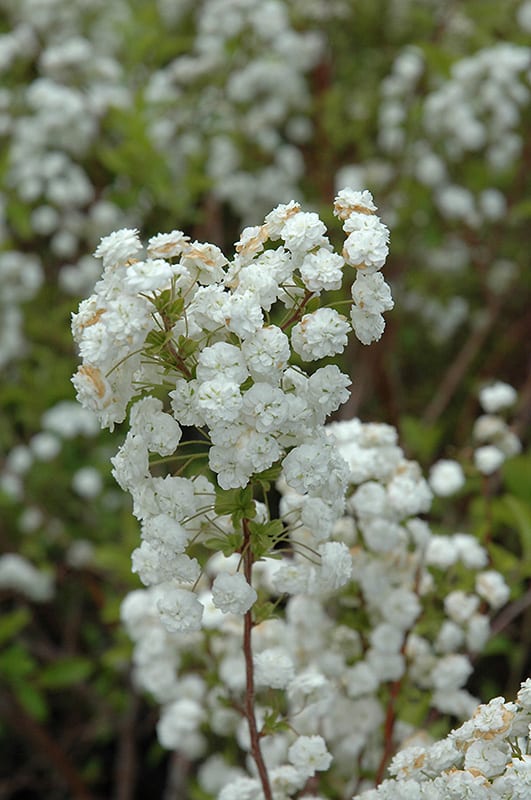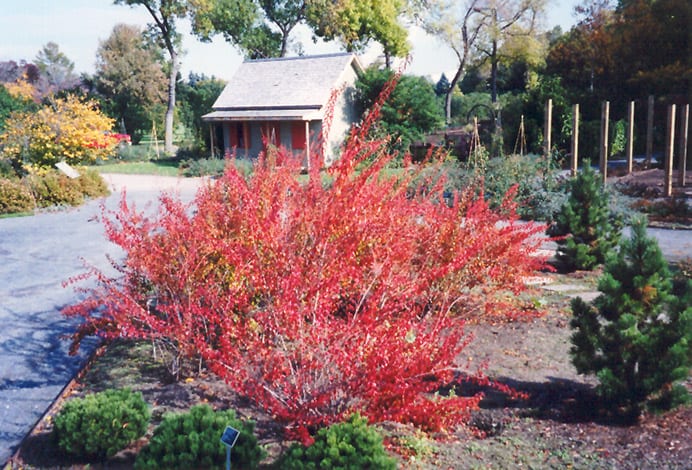Images provided by NetPS Plant Finder Tool
Bridal Wreath Spirea
$34.99
An heirloom shrub which is smothered in double white flowers along the wiry branches in early spring, looks like a ball of snow, and good fall color; a rather shrubby growth habit, with upright stems, quite leggy, needs underplanting and regular pruning.
Species: prunifolia
Plant Height: 84 in.
Spread: 72 in.
Evergreen: No
Plant Form: upright spreading
Summer Foliage Color: dark green
Minimum Sunlight: full sun
Maximum Sunlight: full sun
Bridalwreath Spirea is smothered in stunning clusters of white flowers held atop the branches in early spring before the leaves. It has dark green foliage throughout the season. The tiny serrated pointy leaves turn an outstanding deep purple in the fall. The fruit is not ornamentally significant.
Bridalwreath Spirea is an open multi-stemmed deciduous shrub with an upright spreading habit of growth. Its relatively fine texture sets it apart from other landscape plants with less refined foliage. This is a high maintenance shrub that will require regular care and upkeep, and should only be pruned after flowering to avoid removing any of the current season's flowers. It is a good choice for attracting butterflies to your yard, but is not particularly attractive to deer who tend to leave it alone in favor of tastier treats. It has no significant negative characteristics. Bridalwreath Spirea is recommended for the following landscape applications; Mass Planting Hedges/Screening General Garden Use
Bridalwreath Spirea will grow to be about 7 feet tall at maturity, with a spread of 6 feet. It tends to be a little leggy, with a typical clearance of 1 foot from the ground, and is suitable for planting under power lines. It grows at a medium rate, and under ideal conditions can be expected to live for approximately 20 years. This shrub should only be grown in full sunlight. It prefers to grow in average to moist conditions, and shouldn't be allowed to dry out. It is not particular as to soil type or pH. It is highly tolerant of urban pollution and will even thrive in inner city environments. This species is not originally from North America.

